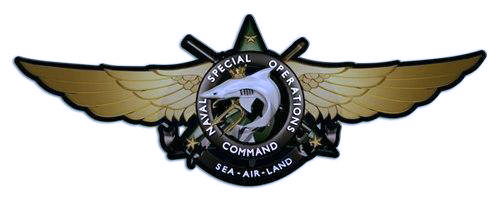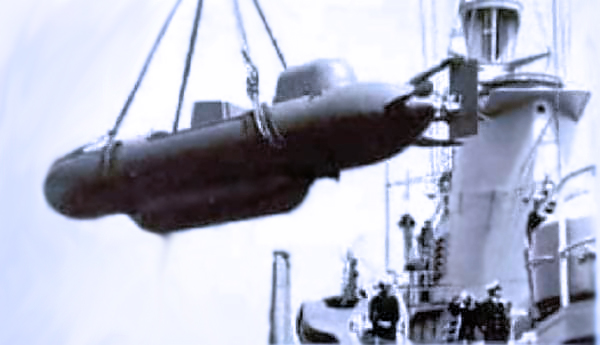THE BEGINNINGS
Formerly known as the Underwater Operations Team or UOT as the present day Philippine Navy Seals were then known, the unit was conceived by then LT Ramon N Baluyot PN while in operations with the Philippine Marines in the Sulu Sea Frontier against dissidents and combating piracy which was prevalent in the area during those times.
ACTIVATION AND EVOLUTION
Based on Headquarters Philippine Navy General Orders No.17 dated 10-October-1956, the UOT was activated on 05-November-1956. The unit was patterned after Italy’s Decima Flottiglia MAS (Decima Flottiglia Motoscafi Armati Siluranti) or Decima Mas and the United States Navy’s Underwater Demolition Team (UDT) which evolved into becoming the U.S. Navy Seals of the today. The UOT at that time had a strength of 1 Officer and 6 Enlisted Personnel which was under the Administrative and Operational Control of the Headquarters, Service Squadron. On 16-March-1957 through HPN Circular Number 53, the UOT became the Underwater Operations Unit (UOU), and the on the following day, Administrative and Operational Control of the UOU was placed under the Headquarters Patrol Force.
The UOU IN SEATO: TRAINING FOR THE COLD WAR (BILATERAL & MULTILATERAL EXERCISES)
By March to April 1962, the Underwater Operations Unit would became part of SEATO Exercise TULUNGAN in which during D-Day of the exercise, LT Ramon Navarro PN spearheaded the landings as a Beach Recon and Demolitions Group. Exercise TULUNGAN was a large scale exercise involving the Australian, Philippines and United States Forces. In January 1963, LT Ramon Baluyot would be in the thick of action during Exercise BAWI –the first major AFP exercise involving all branches of service.
It was also in the 1961-62 period that 3 Italian-made Cosmos CE2F/X60 Swimmer Delivery Vehicles were procured for use by the unit. Two examples of the craft exist at the Philippine Navy Museum in Fort San Felipe and at the AFP Museum in Camp Aguinaldo. Specifications of the Cosmos CE2F/X60 Swimmer Delivery Vehicle:
- Length: 7 meters
- Weight: 2.1 tonnes
- Maximum depth: 100 m
- Range: 50 nmi (95 km) @ 4 knots
- Speed: 5 knots (underwater)
- Crew: 2
In August 1965, the UOU was again on Exercise HASAAN (or sharpening) in which the UOUs along with the Philippine Marines were airdropped on an island, the exercise scenario was that the Island of Balabac in the Province of Palawan was occupied by hostile forces. Prior to the Amphibious landing of the exercise two teams of the UOU were inserted and they destroyed beach obstacles.
In September 1966, Bilateral RP-US Exercise BOLADOR commenced with the objective of capturing Corregidor being occupied by a fictional aggressor force. UOU participation was to conduct advance reconnaissance and demolition of beach obstacles in the landing area. Exercise BOLADOR is notable as the first instance the Philippine Marines conducted a heliborne assault or vertical envelopment tactics employing 16 Helicopters.
By 1967, one UOU team participated in another large SEATO Exercise “SIYASAT” involving forces from the U.S., Australia and the United Kingdom.
In May 1967, Exercise GURAMI was conducted to test the joint capabilities of the Philippines UOU and the United States Underwater Demolitions Team or UDT and in support to the Philippines Marine Recon and Raiding assault. The primary objective of the exercise was the infiltration and elimination of the a fictional irregular warfare training group that had set up base in Western Mindoro.
The UOU was led by now LCDR Ramon Baluyot PN while the Marine Contingent was led by then LCDR Rodolfo Punsalang PN, with CDR Jose E Diaz PN as Coast Guard and Task Group 105 Commander for the Exercise on board the U.S. Destroyer Escort USS Weiss (APD-135).
UOU Teams during the exercise were led by LTJG Luis Del Mundo PN, LTJG Bonifacio Gempis, and their American counterparts namely: LTJGs Mike Collins, John Roberts, and Ensign Manuel Isaac USN. Techniques gained on Exercise GURAMI were the river reconnaissance and the successful support by both PN UOU and USN UDT for the Philippine Marine Assault Force.
ACTIONS DOWN SOUTH
On 05 to 14-July-1973, Operation Pamukpok was launched in Tuburan Basilan, considered as the first successful amphibious operation on an enemy stronghold. Overall Command as Amphibious Task Force 32 was led by CAPT Leonardo G Bugayong PN along with 2nd Battalion Landing Team (Landing Force 33) under LCDR Arturo T Asuncion PN with the 4th, 5th, and 9th Marine Companies under ENSIGNS Fundador Demandante, Romelino Gojo and LTJG Renato Naco PN.
In support were NAT 32 under Captain Bugayong and the Transport Group TG 32.2 with LCDR Francisco Mendoza Jr in Command and CO of Landing Ship Medium RPS Oriental Mindoro (LP-68) along with RPS Cagayan (LT-86), RPS Misamis Oriental (LT-40) and Repair Ship RPS Narra (AR-88). Also in support Task Group 32.7 as the Control Group with LT Vicente Gariza as TG Commander and CO of RPS Catanduanes (PG-62) with Patrol Craft Fast 308,310, 314, 315 and 1 UOU team.
On 15 to 19-September-1973, Operation Batikus was launched when an amphibious landing was made at Siasi Island in Sulu with the objective of restoring peace and order in the town of Sewing, Siasi, and to prevent the capture of Siasi by insurgents. Naval Task Force 32 was the primary unit for the operation with one UOU team performing as part of Marine Landing Force 33.
Apart from the actions down south during the period, UOU teams were also part of various humanitarian assistance and disaster response during floods in the national capital region and various provinces all over the archipelago, including and search and rescue missions on ships sunk.
UOU also provided lifeguards during various Fluvial Parades and in one occasion in 1972 a Joint UOU Team with SEABEES Personnel conducted a rescue of more than 200 families in the Province of Panay during a flood.
A HERO’S TALE
On 05-March-1975, an amphibious landing was made at the towns of Kandiis and Matamal, Tuburan Basilan comprising 7 ships of the Navy with 11 smaller craft in support. They landed 3 Marine Battalion Landing Teams and 1 Army Battalion.
The Officer In Charge of the UOU team was Ensign Renato A Caspillo PN whose task was to conduct deep penetration and reconnaissance on the Kandiis River and eventually destroy the enemy stockpile of arms and ammunition.
After accomplishing their mission and on the phase of withdrawal, heavy enemy fire ensued. While supervising his team withdrawing in an orderly manner, he was hit by enemy fire and issued orders to the recovery boat captain, “Recover all Divers, never mind me.” He continuously provided cover fire while his team was extricating. At the age of 25, ENS Caspillo displayed remarkable combat leadership. As a fitting tribute, a road was named after him at the NWSU 6 HQ.
THE COAST GUARD SPECIAL COMPANY AND THE UOU
On 16-November-1972, the Coast Guard Striking Force (CGSF) was activated with a strength of 3 Officers and 50 Enlisted Personnel under the Headquarters Law Enforcement Command. The force underwent several name changes from Task Force 41 to Elite Company and by 02-October-1974, it was known as the Coast Guard Special Company.
In late 1973 while it was still known as the Elite Company, CG Personnel organized a SAR team that worked with the UOU team and prove it’s mettle on the various Search and Rescue operations in various areas in the mission parameters of SOLAS.

Riverine Utility Craft of the PN recovering a UOU Frogmen during an exercise.
TRANSFER TO NOF, NAME CHANGES TO PRESENT
On 16-March-1964, transferred under Headquarters, Naval Operating Forces. A few years later, UOU evolved into a larger unit and was designated as the Underwater Operations Group or UOG.
Apart from the ultimate sacrifice made by Ensign Caspillo, heroic deeds abound in the unit, UOU personnel were also lost during the tragic sinking of RPS Datu Kalantiaw in 1981.
By 1983, the UOG, would be renamed the Special Warfare Group (SWAG), and again as the Naval Special Warfare Group (NSWG) during the 1990’s.
On 30-May-2005, it became the Naval Special Operations Group (NAVSOG). It then evolved into the Naval Special Operations Command (NAVSOCOM) of today.

NAVSOCOM Logo
SOURCES:
- History of the Philippine Navy by Capt Silverio Aquino PN (GSC) and LT Isidro G Espela PN, HPN 1976,
- The Philippine Navy 1898-1998 by Commodore Regino P Giagonia AFP, HPN, 1998.
- Southeast Asian Special Forces by Ken Conboy (Elite Series 33), 1991.
About the Author:
PCGA CDR Mark R Condeno is Deputy Administrative Officer, Philippine Korean Friendship Center, and Museum Curator; and PEFTOK Korean War Memorial Hall Museum under the Dept of National Defense-Philippine Veterans Affairs Office. In 2007, he was Research Officer at the Office of the Naval Historian, PN; and Projects Officer at the Marine Historical Branch of Fleet Marine Warfare Center, PN. He earned a BS Architecture at Palawan State University. In 1997, he completed the Basic Naval Reserve Officers Training Course, PN. He is with Bravo Class of 1999, PCG Auxiliary Officer’s Indoctrination Course. In 2002, he took the Aerospace Power Course at Air University, USAF. In 2008, he took the Military History Operations Course at U.S. Defense Technical Information Center. He is with Class 26 Executive Course on National Security at the NDCP.
